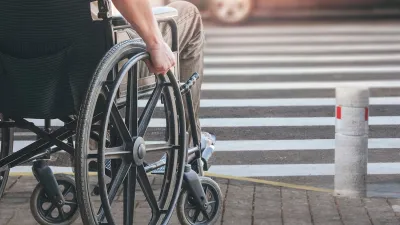Major sporting events like the Olympics and the Super Bowl can serve as catalysts for major changes in transportation infrastructure and accessibility.

The city of New Orleans is turning its focus to making the entire city more walkable and accessible in preparation for hosting the Super Bowl in February, reports Patrick Sisson in an article in Fast Company.
The city, state, and local business groups are managing approximately 550 infrastructure projects, said Michael Hecht, CEO of Greater New Orleans, the local economic development organization. Altogether, roughly two dozen organizations aim to do approximately $60 million of work in the next five months, which include upgrading sidewalks, roads, and rights of way.
While the historic city evokes images of picturesque streets mobbed with pedestrians and vibrant storefronts, the city’s infrastructure can pose serious mobility challenges for people with mobility impairments. “It’s also difficult to update, since there are so many historic preservation requirements to use cobblestones or other traditional paving materials.”
Just three of the city’s 54 historic streetcars are ADA compliant, Sisson adds. A $5.5 million federal grant to study potential accessibility improvements could change that.
For New Orleans, the Super Bowl could be a catalyst for durable improvements. According to Michael Hecht, CEO of economic development organization Greater New Orleans, “The Super Bowl effort is serving as a forcing function to help us modernize New Orleans, and in that sense, it’s going to be very productive for us.”
FULL STORY: How New Orleans is using the Super Bowl to make the entire city more accessible

Planetizen Federal Action Tracker
A weekly monitor of how Trump’s orders and actions are impacting planners and planning in America.

Congressman Proposes Bill to Rename DC Metro “Trump Train”
The Make Autorail Great Again Act would withhold federal funding to the system until the Washington Metropolitan Area Transit Authority (WMATA), rebrands as the Washington Metropolitan Authority for Greater Access (WMAGA).

The Simple Legislative Tool Transforming Vacant Downtowns
In California, Michigan and Georgia, an easy win is bringing dollars — and delight — back to city centers.

DC Backpedals on Bike Lane Protection, Swaps Barriers for Paint
Citing aesthetic concerns, the city is removing the concrete barriers and flexposts that once separated Arizona Avenue cyclists from motor vehicles.

In These Cities, Most New Housing is Under 441 Square Feet
With loosened restrictions on “micro-housing,” tiny units now make up as much as 66% of newly constructed housing.

Albuquerque’s Microtransit: A Planner’s Answer to Food Access Gaps
New microtransit vans in Albuquerque aim to close food access gaps by linking low-income areas to grocery stores, cutting travel times by 30 percent and offering planners a scalable model for equity-focused transit.
Urban Design for Planners 1: Software Tools
This six-course series explores essential urban design concepts using open source software and equips planners with the tools they need to participate fully in the urban design process.
Planning for Universal Design
Learn the tools for implementing Universal Design in planning regulations.
Smith Gee Studio
City of Charlotte
City of Camden Redevelopment Agency
City of Astoria
Transportation Research & Education Center (TREC) at Portland State University
US High Speed Rail Association
City of Camden Redevelopment Agency
Municipality of Princeton (NJ)





























